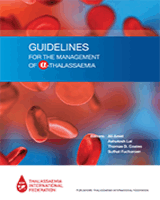From: Chapter 1, EPIDEMIOLOGY, PATHOPHYSIOLOGY AND DIAGNOSIS OF α-THALASSAEMIA

NCBI Bookshelf. A service of the National Library of Medicine, National Institutes of Health.
Hence, it is crucial and strongly advised to assess haematological parameters and, in certain cases, family history when determining the most appropriate molecular analysis. This approach is vital to avoid misinterpretation of results [12]. Occasionally, the clinical manifestations of α-thalassaemia are influenced by the specific type of variant present in an individual and its location within the gene. For instance, in α-thalassaemia, non-deletional variants of α-globin genes tend to be associated with more severe clinical phenotypes when compared to large deletions. Therefore, it is essential to strategically select the appropriate molecular analysis based on the type of variant linked to the clinical phenotype, and sometimes, this choice may also depend on specific population characteristics and knowledge of common regional mutations.
From: Chapter 1, EPIDEMIOLOGY, PATHOPHYSIOLOGY AND DIAGNOSIS OF α-THALASSAEMIA

NCBI Bookshelf. A service of the National Library of Medicine, National Institutes of Health.